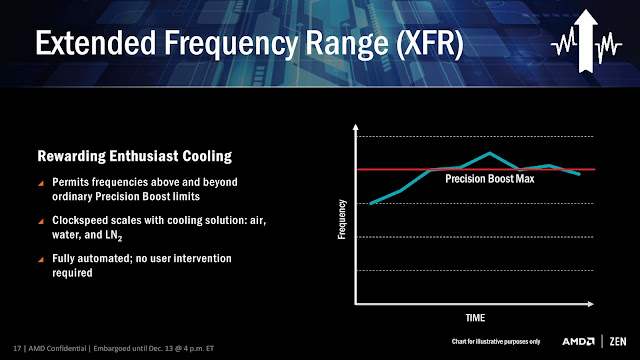AMD has given a sneak peak of its latest Zen architecture aka Ryzen core processors. The live stream was done on AMDs website. Here some specs and performance of early Ryzen chips were shown. These were in straight comaparasion with Intel's 6900k Broadwell-E processor which packs the same configuration as the chip shown.
The first Ryzen-based chip will be the Summit Ridge family of high-end desktop chips. These will feature an 8-core 16-thread CPU i.e. is a true 8-core chip using simultaneous multithreading with a base clock of 3.4GHz. This chip also outperforms Broadwell-E processors not only in speed but also IPC and TDP. The IPC is 40 percent less and the TDP also has a huge margin of 45W as Ryzen has a TDP of 95W while Broadwell-E has a TDP of 140W.
AMD's new chipset AMD AM4 Platform was released that supports USB 3.1 Gen 2, NVMe, SATA Express and Unlimited Upgrade and Expansion as said by AMD.
These processors have AMD's new SenceMI technology where MI stands for Machine Intelligence. It packs Five technologies which are Pure Power, Precision Boost, Extended Frequency Range, Neural Net Prediction and Smart Prefetch.
Pure Power:-
It monitors temperatures, speed and voltage of the chip and optimizes the silicon chip behavior to deliver lower power usage by using adaptive control for real time management.
Precision Boost:-
It works with Pure Power control loop and utilizes it's information to optimize clock speeds without halts. It has a high precision tuning with 25MHz increments.
Extended Frequency Range:-
It provides higher clock frequencies as per the users cooling criteria.Those running big air coolers, liquid coolers will apparently see a big improvement compared to a stock cooler. The process is entirely automated, so even those without any overclocking skills can gain a performance boost.
Neural Net Prediction:-
As claimed by AMD it uses true artificial network that are able to predict future decisions, pre-load instructions, and learn application data access patterns in order to improve performance.
Smart Prefetch:-
it works with Neural Net Prediction and learning algorithms designed to learn application access patterns to prefetch vital data into local cache for fast and improves usage and speeds.
At the end there was also a speak of EA's Star Wars Battlefront DLC The Rouge One which was played on Ryzen and AMDs next gen graphic architecture VEGA and performed quite well.
"Now the stage is set for the massive showdown between processor giants Intel and AMD"
Author: Saatvik Awasthi






































